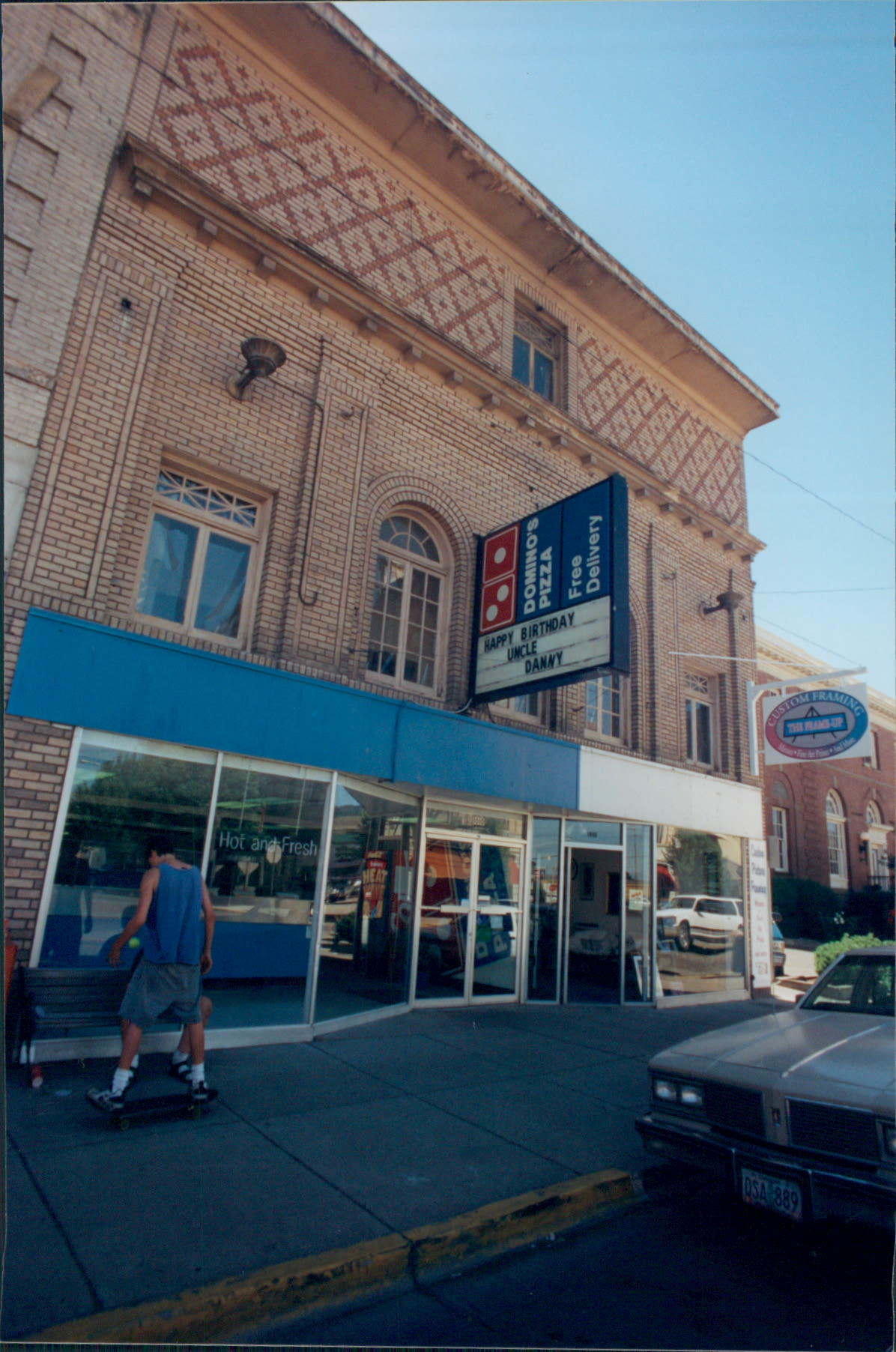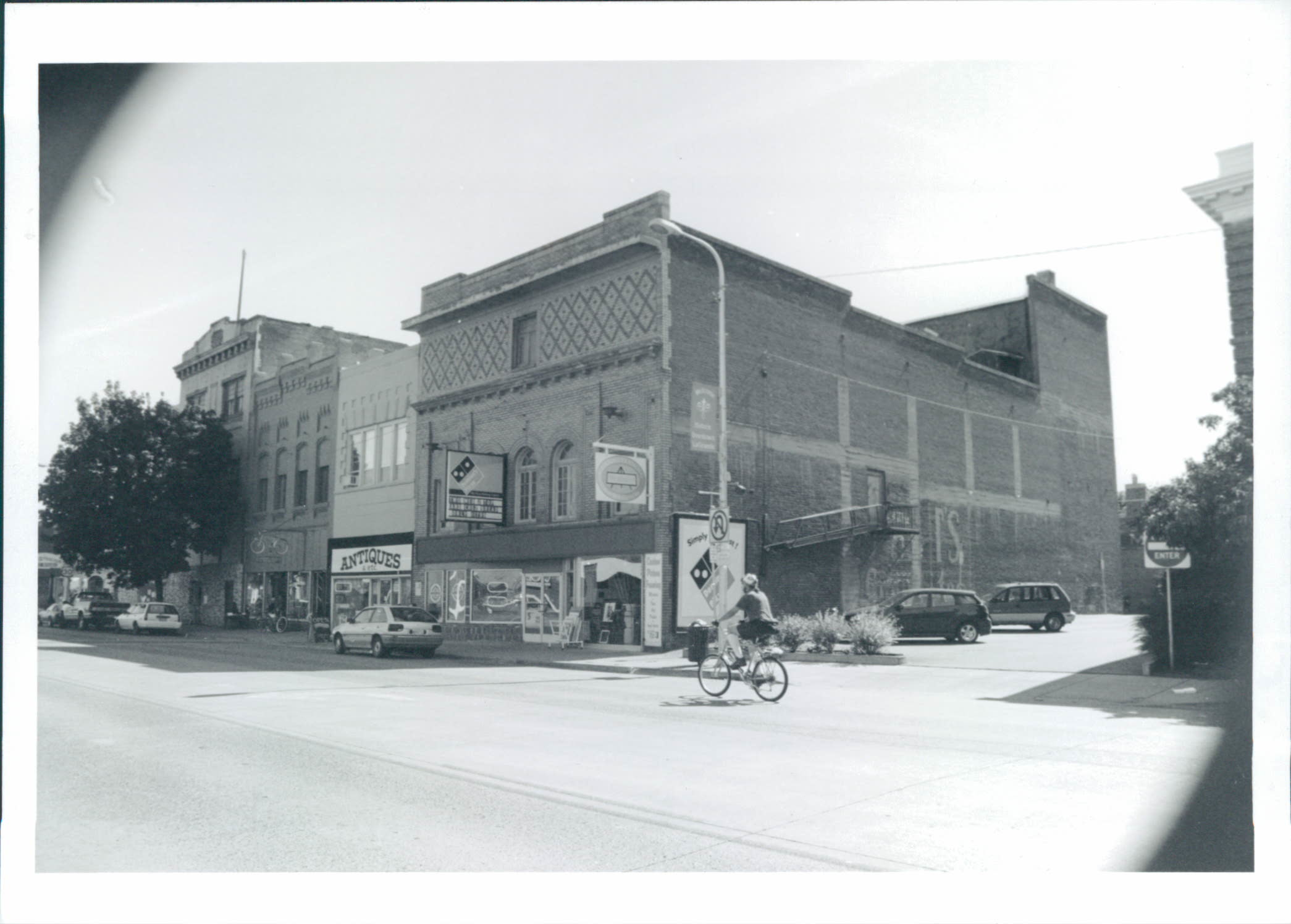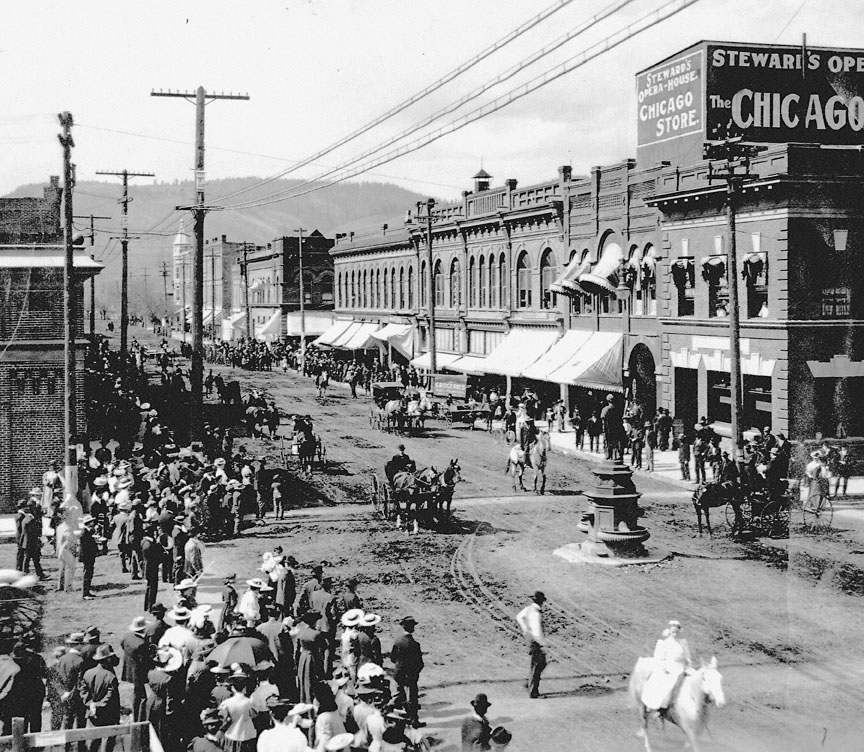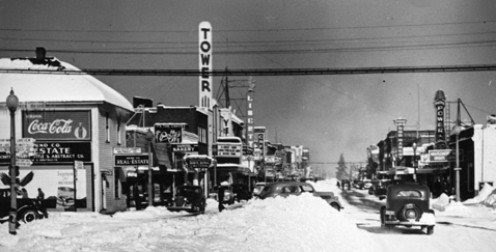La Grande businessman Stephen Gardinier and his wife Madeline opened the two-story Liberty Theatre in 1910—originally named the Orpheum, and later the Arcade—to capture the silent movie craze sweeping the nation and to provide a first-class venue for vaudeville shows traveling the West Coast. The commercial-style building, with its solid but simple flat exterior, still retains much of its structural integrity, including the original façade, auditorium, stage, and balcony, as well as the dressing rooms, projection booth, and ornate chandelier.
The Gardiniers, who often faced delays in film deliveries from Portland, were forced to substitute local talent when entertainers failed to show up. They also battled local ministers and civic leaders who called for boycotting the theater on moral grounds. Nevertheless, for two decades the 632-seat theater became the city’s most popular venue for vaudeville, audience sing-a-longs, Chautauqua-like lectures, and silent films. At night, the building's bronze torches illuminated lines of patrons, who were welcomed inside by a large pipe organ in the auditorium. Newspaper ads described those early programs as family affairs, with the promise that “no picture will be presented that could offend.”
In 1930, Inland Theaters, Inc., one of the West Coast’s first movie chains, purchased and significantly remodeled the interior of the theater for comfort, eye appeal, and sound movies. On October 3, 1930, new owners Frederick Mercy and Frederick Mercy, Jr., renamed it the Liberty Theatre and held a gala reopening with the showing of Will Rogers’s comedy So This Is London.
In the mid-1940s, U.S. Army Captain Francis “Gus” Greulich and J.E. “Ted” Jones of Los Angeles—owners of the Granada and State Theaters in La Grande—purchased the Liberty and began operating the city’s three theaters under the umbrella of the Western Amusement Company.
To compete with radio and television in the 1950s, the Liberty hosted weddings, best-looking contests, kiddie matinees, prize giveaways, double features, and audience-inviting promotions. Nevertheless, the theater continued to struggle and closed on May 3, 1959.
Three years later, the first floor was remodeled into an auto parts store and pizza carryout. The theater disappeared behind a false ceiling and thin wall. For several years, the auditorium and balcony were littered with piles of broken seats, construction debris, and dust. Pigeons began roosting in the rafters.
In July 1999, the building was placed on the National Register of Historic Places, and there were proposals to restore the theater. Enthusiasm for restoration waned until 2009, when the Friends of La Grande Main Street’s Liberty Theater Division organized and began cleaning up the building. In 2011, the Friends group received urban renewal funds and a grant from the Oregon Main Street Program to purchase the building for $162,800.
The following year, the newly formed Liberty Theatre Foundation installed fifty of the original seats and opened Stage Door Theater for a summer series of comedies and dramas, lectures, and cinema festivals. By 2013, patrons were once again lining up at the box office to view live shows in the century-old building.
-
![Liberty Theater before renovation]()
Liberty Theater before renovation.
Liberty Theater before renovation Courtesy Joe Fitzgibbon
-
![Liberty Theater (when it was known as the Arcade)]()
Liberty Theater (when it was known as the Arcade).
Liberty Theater (when it was known as the Arcade) Courtesy Joe Fitzgibbon
-
![Charles B. Miller photograph collection. PH Coll 154.]()
Street facade of Arcade Theatre, La Grande, Oregon, 1923.
Charles B. Miller photograph collection. PH Coll 154. Courtesy University of Washington Libraries, Special Collections, SOC5670 -
![Liberty Theater remodeling as pizza parlor]()
Liberty Theater remodeling as pizza parlor.
Liberty Theater remodeling as pizza parlor Courtesy Joe Fitzgibbon
Related Entries
-
![City Girl (film)]()
City Girl (film)
In the summer of 1928, German Expressionist filmmaker F. W. Murnau rent…
-
![La Grande]()
La Grande
La Grande, the seat of Union County, is nestled in the eastern foothill…
-
![Tower Theatre]()
Tower Theatre
The Tower Theatre is Bend’s most colorful and iconic landmark. Since th…
Map This on the Oregon History WayFinder
The Oregon History Wayfinder is an interactive map that identifies significant places, people, and events in Oregon history.
Further Reading
National Register of Historic Places Registration Form, July 7, 1999.
Rautenstrauch, Bill. “Historical restoration brick by brick.” La Grande Observer, July 4, 2012.







